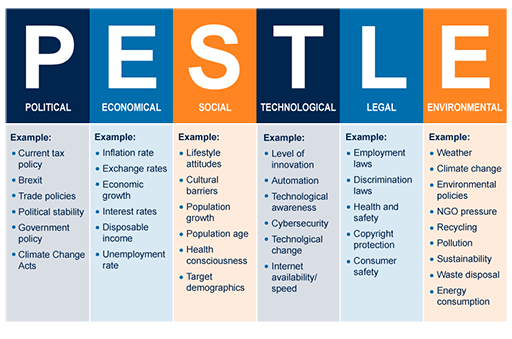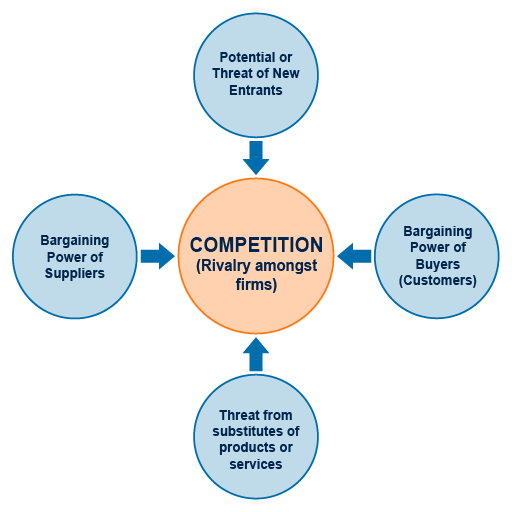3.5 Developing the ‘How’
Once you have established your 'Why’ and have a feel for the future vision you are going explore, the ‘How’ and the ‘What’ come next, and for that we need to develop a strategy and approach for planning.
According to Sola and Couturier (2014), there are five stages in the strategy development process which can be applied for planning, and one force that will need constant consideration – organisational culture (they call this the ‘Invisible Hand’) – which can be difficult to manage:
This can be done through:
- an analysis of the current business model
- value proposition
- key activities
- resources and capabilities
- value network (partnerships, supply chain)
- differentiation.
Stage 1: Assess the situation
Sola and Couturier (2014) suggest you should also look at your position relative to your sectoral peers, macro-environmental factors (PESTLE analysis is useful here – see Figure 15), and sector/industry-related factors and trends (maybe use Michael Porter’s five forces model for this one – see Figure 16).
Stage 2: Identifying the core challenges and setting the goals
Using a SWOT analysis (see Table 5) can be helpful but identified positive and negative effects should be validated against their cause.
| Internal factors | External factors |
|---|---|
Strengths
|
Opportunities
|
Weaknesses
|
Threats
|
To reduce the number of core challenges, you can ask whether overcoming them will create value for the organisation (or destroy value if it is not addressed). You can ask whether you have the right resources or capabilities to address the core challenge, and finally, will the organisational culture assist in overcoming it, or will it get in the way?
Setting strategic objectives:
You then need to set the strategic objectives – these need to:
- have a clear timeframe (2–5 years)
- be easy to understand/communicate
- be challenging but achievable
- have a clear impact on competitive advantage or delivering to your ‘Why’.
Once these have been identified, strategic guidelines need to be developed for each.
Stage 3: Solving the core challenges
This is never easy as they often involve social/human, economic, legal, and technological elements. Often it is best to try to reduce the core challenge’s complexity, by breaking it down into key constituents and understanding their importance. Once the complexity is reduced, solution options can be identified.
Once solutions options are identified, you will need to select the best potential option. You will need to assess which one will have the most impact on addressing the core challenge, cost/benefit and when they can be implemented.
Stage 4: Reducing uncertainty
Uncertainty in strategy exists in three ways:
- Uncertainty around value creation, whether the delivered benefits outweigh the investment.
- Uncertainty around the ability to scale the initiative and keep the levels of return.
- Uncertainty regarding sustainability of the actions the organisation has chosen to implement.
Sola and Couturier (2014) suggest testing the options using the ‘lean testing’ approach to reduce uncertainty. The approach consists of four phases:
- Stating the underlying assumptions along three dimensions – value, growth, and sustainability.
- Testing assumptions about value.
- Testing assumptions about growth.
- Testing assumptions about sustainability.
Stage 5: Managing execution
This is where we get to implement the tested solutions and achieve the results we expect. Executing your strategy is about taking action that is coordinated and complementary and, according to Sola and Couturier (2014), most strategy failures can ‘be traced back to issues that undermine or prevent this coordination’.
They cite culture, communication, and corporate structure amongst these issues. They also cite two other reasons for failure: people do not understand the ‘Why’ and ‘What’ to change, and even if they do, they don’t know ‘How’ as they fail to see the link between strategy and practical change (Sola and Couturier, 2014).



